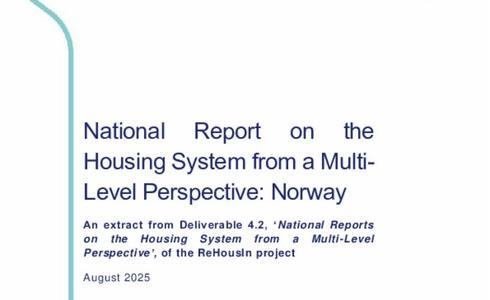National report on the housing system from a multi-level perspective: Norway
An extract from Deliverable 4.2 “National reports on the housing system from a multi-level perspective”
While post-war housing policy featured strong state involvement – particularly through land policy, cooperative housing, and subsidized finance – since the 1980s there has been a gradual shift toward market-oriented governance. Today, housing is predominantly treated as a private asset, with high homeownership rates, limited rental regulation, and residual public provision.
The report examines national policy tools such as Husbanken loans, planning frameworks, and fiscal incentives, showing how these offer selective support but lack the scale and regulatory force to influence broader affordability outcomes. It also explores the challenges municipalities face in steering housing development, as declining public land ownership and strong market pressures weaken local capacity, especially in contexts of urban densification. A central focus is the changing role of cooperative housing actors, especially OBOS, whose operations now attempt to balance social commitments with commercial strategies. Environmental objectives – such as energy retrofitting and densification – are increasingly present in policy discourse, yet remain poorly integrated with housing equity goals.

Publication date:
Languages: English